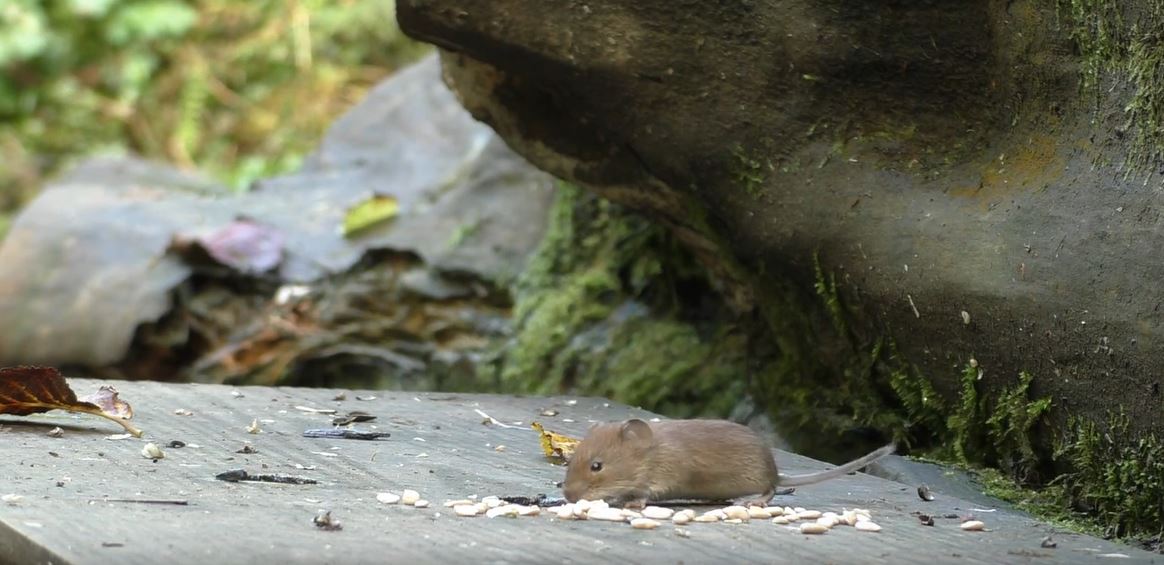About The House Mouse: Appearance, Biology, Life Cycle, Habitat, Diet, And Behavior

Out of all the wildlife that may find shelter in your home, many people have the strongest negative reaction to the house mouse. This is the type of mouse most commonly found in homes and is just one numerous mice species, such as the zebra mouse, spiny mouse, dormouse, wood mouse, deer mouse, and field mouse. While mice may cause a nuisance and can contaminate your food, they will not typically harm you or other people in your home. You should still, however, have a basic understanding of their appearance, biology, and diet so you can recognize a mouse in your home, know why it is there, and work to get rid of it.
Appearance
House mice have short hair which is gray, black, or light brown and their bellies are lighter colored. This area is typically buffy or white. There is also hair on the tail and ears, although you will not find as much on this area and the tail also has scales in circular rows. It is common for house mice who live close to humans to have longer tails as well as darker fur.
A fully grown adult will weigh between 12 and 30 grams and may measure 20 centimeters from the end of the tail to the edge of the nose. You can also identify them by their rod-shaped droppings with points on either end.
Biology And Life Cycle
This is one species that reproduces incredibly quickly. A female house mouse can have up to ten litters every year and each litter typically has around 6 pups, although they may have 12. When the males smell that a female is ready to mate, it will begin to sing to attract females. Each male mates with several females.
The pregnancy lasts between 19 and 21 days long, at which point the pups are born. They are blind and naked as well as completely dependent on their mothers. Fur starts appearing around 10 days and they open their eyes at 2 weeks. When they reach around 21 days old, they are ready to be weaned. At this point, they will travel a short distance away from their home nest, exploring the area. The average house mouse will reach sexual maturity when it is 35 days old and start mating at about six weeks.
In captivity, a house mouse will live about 2 years, with the record being about 5 years. The majority of wild mice will only live to 12 or 18 months.
Habitat
The house mouse prefers to live in areas which are dark and provide protection from the elements. They also try to pick an area with a nearby food source so they will typically stay in wooded areas, grassy fields, or farm fields. In the colder months, house mice do not hibernate so instead they look for a warm place to move. They move into people's homes or the building's warmth and the presence of food. As a small animal, the house mouse can easily enter a home through pipe openings, the gap beneath the door, or utility lines.
It is common for house mice to spend nice weather in the field before entering houses and barns during the colder months. The way that these rodents use human buildings for shelter and get food from humans has allowed them to spread to areas, such as the desert, where they wouldn't be able to otherwise. A typical mouse home will have a few different “rooms” in the wild with designated areas for storage and nesting. In human areas, this is not always the case.
Diet
The preferred diet of the house mouse is nuts and seeds. They are, however, opportunistic and will eat nearly anything they find. This includes seeds and nuts as well as roots, leaves, stems, and insects like cockroaches, caterpillars, and beetles. They will also eat human food, soap, and glue.
Behavior
This animal is very inquisitive and can easily spend the whole day exploring their home and the surrounding area. Mice are mostly nocturnal, but it is not unusual to see house mice during the day as well. They can run up to 8 miles an hour and swim, climb, and jump well. They tend to be territorial and do not typically stray far from their home. Female mice have a ranking system and family members will defend their home from outsiders.
House mice also have great hearing and vision as well as smell. Their whiskers let them tell surface textures and feel air movements. They are known for squeaking to communicate, but will also use smells like pheromones.
There are many predators that prey on house mice, which is why they avoid being in the open and have developed their ability to run quickly. Just some of their predators include weasels, foxes, ferrets, cats, large lizards, owls, falcons, hawks, and snakes.
Read the How to get rid of mice page for helpful information and to learn more about About The House Mouse: Appearance, Biology, Life Cycle, Habitat, Diet, And Behavior

